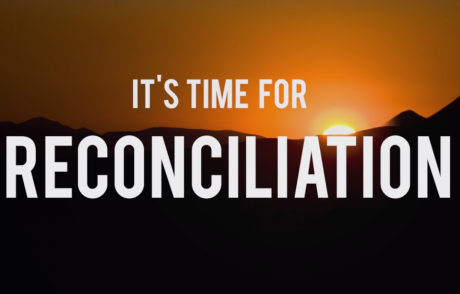News
You are here
Truth and Reconciliation: what next for real progress?

June 3, 2015
On June 2, Justice Murray Sinclair released the summary report of the Truth and Reconciliation Commission (TRC). The full report will be issued later this year. The Commission was mandated to report on the experiences of those who attended residential schools, which were funded by the federal government and operated by various churches from the 1840s to 1996. Some 150,000 children were forced to attend these schools.
The TRC report was six years in the making. Over 6,750 survivors shared their experiences in both public and private settings in 300 communities, and it is thanks to the bravery of these survivors that the Commission was able to prepare a report that is both jarring in its depictions of what happened, and action-oriented in its recommendations.
The cultural genocide carried out through residential schools took several forms. While the forced removal of children from their families, culture and communities was traumatic enough, further mistreatment took place as children were not allowed to speak their own languages or wear their traditional clothes or hair lengths—the idea being to “kill the Indian in the child.” Tragically, many children were further physically and/or sexually abused and, in estimates running from 3,500 to 7,500, some children died while at these schools. In many instances, parents were not told of their children’s death, and there are many unmarked graves. TRC Commissioner Marie Wilson said throughout the history of residential schools, the federal government, through the Indian Affairs department, actively worked with residential school officials to keep reports of abuse under wraps despite inquiries from police agencies.
The report provides a wide-ranging set of recommendation (94 in all), under the headings of child welfare, education, language and culture, health, justice, reconciliation, Royal Proclamation and Covenant of Reconciliation, Settlement Agreement parties and the UN Declaration on the Rights of Indigenous Peoples, equity for Aboriginal people in the legal system, National Council for Reconciliation, Professional Development and Training for Public Servants, Church Apologies and Reconciliation, education for reconciliation, youth programs, museums and archives, missing children and burial information, National Centre for Truth and Reconciliation, commemoration, media and reconciliation, sports reconciliation, business and reconciliation, and newcomers to Canada.
Response
At the time of writing, responses from Indigenous peoples are just starting to appear. The mainstream media has provided accounts from individual survivors who, while glad to have the opportunity to tell their stories, expect justice. Indigenous scholar and activist Cindy Blackstock, head of the First Nations Child & Family Caring Society has long been a reconciliation activist, turning her attention to school-age, non-Indigenous children. She is encouraged by their sensitive response and calls for justice. In a survey by the Toronto Star, 87 per cent answered yes to the question “Should the truth about residential schools be part of history curriculum?”
But both Liberals and Conservatives have been hypocritical when it comes to the treatment of Indigenous peoples in general and residential schools in particular. Unlike the previous Liberal governments, Harper was willing to issue an apology, in 2008, for the treatment of Indigenous children in residential schools. Yet he refuses to hold a public inquiry into murdered and missing Indigenous women, or to properly fund services for Indigenous peoples. Harper also “endorsed” the UN Declaration on the Rights of Indigenous Peoples in 2010, something the Liberals had been unwilling to do. But this “endorsement” falls far short of what is needed, which is why the TRC and others have been calling for the government to fully adopt and implement the Declaration.
While the Liberals and NDP said they accept the report’s recommendations, the Tories have been predictably hostile. Harper’s government refuses to use the term “cultural genocide” to describe what happened at residential schools, even though this description is widely accepted in judicial and other circles. Harper has also said he will not implement the recommendation regarding signing the UN Declaration on the Rights of Indigenous Peoples, because it would inhibit the legislative freedom of the Canadian state in his view.
The Canadian state has continued to oppress Indigenous peoples in many ways other than residential schools. In just a few from many possible examples:
· The government delayed the release of historical documents required by the TRC to do its work; the TRC had to go to court in order to gain access to the government documents
· In a similar vein, the government tried to prevent a Human Rights case going forward, a case dealing with discrimination against First Nations in the funding of child and family services on reserve; the government even went so far as to ensure surveillance on Cindy Blackstock, who heads one of the complainant organizations in the case (First Nations Child and Family Caring Society)
· There continues to be serious under-funding of health and education services particularly on reserve
· There have been serious delays and other forms of bad faith bargaining in modern treaties and in honouring historic, signed treaties and other agreements between the federal government and individual First Nations and Inuit communities.
Why? All of this stems from the government’s (whether Liberal or Tory) unwillingness to be seen to give any ground to Indigenous claims over traditional territories, particularly the tremendous resources attached to them, whether oil, gas, fish, or forests. These parties’ friends, who are CEOs in the extraction industries, would go berserk if not allowed to have a free hand in these territories.
Where do settlers go from here?
As the TRC and other Indigenous activists have made clear, it is not up to Indigenous peoples to change or “progress”; it is up to non-Indigenous people to change. What are the prospects?
We are in a favourable environment to increase unity between Indigenous and non-Indigenous people. Unlike the time in the late 1990s when the Royal Commission on Aboriginal Peoples completed its work, we now have Idle No More—and higher levels of public awareness of the ongoing oppression of Indigenous peoples. While there is still a long way to go—with too many negative stereotypes, willful ignorance, resentment/ “get over it” attitudes—there have also been lots of examples of joint work.
Here are some immediate actions we must undertake:
. press the government to implement the TRC’s recommendations
. show solidarity with unique indigenous struggles
. work together, under indigenous leadership, on common issues like climate justice.
We have a fabulous opportunity to do so by building the July 4-5 actions for Jobs, Justice, and Climate (see www.350.org/july for actions in your community). There are new coalitions of activists from indigenous communities, other oppressed groups most affected by climate change, trade unions, faith groups and other social justice campaigners.
These actions and alliances will be key to help ensure justice for Indigenous peoples and for everyone.
Section:










